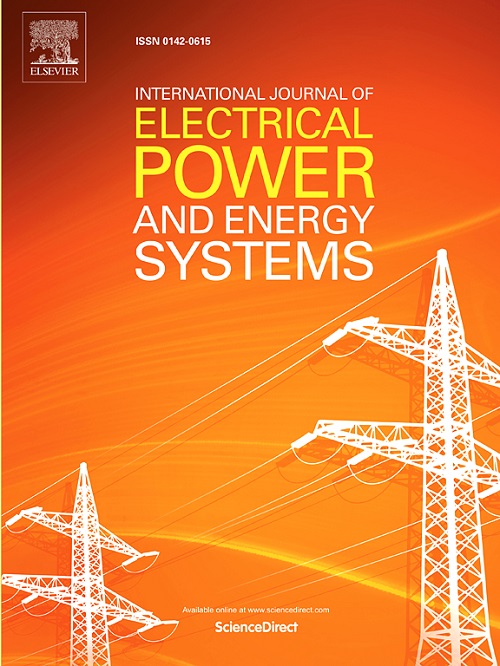Hierarchical model based on optimized feature decomposition and deep learning for short-term wind-power forecasting
IF 5
2区 工程技术
Q1 ENGINEERING, ELECTRICAL & ELECTRONIC
International Journal of Electrical Power & Energy Systems
Pub Date : 2025-09-13
DOI:10.1016/j.ijepes.2025.111097
引用次数: 0
Abstract
Renewable energy development relies heavily on accurate wind-power forecasting. However, predicting wind power presents significant challenges, given the unique operational complexity inherent in wind farms. To overcome these challenges, this study proposes a novel hierarchical model based on optimized feature decomposition and deep learning. First, variational mode decomposition (VMD) is performed to decompose wind energy to mitigate variability and instability. Then, the Rime optimization algorithm (RIME) is implemented to optimize the parameters of VMD, thereby enhancing the effective decomposition of wind power into multiple, smoothly varying modal components. These components and the selected meteorological features are then used to generate sequential data, which are input into a temporal convolutional network (TCN) to extract time-series information from the wind-power data. A bidirectional long short-term memory network (BiLSTM) with self-attention mechanism (Attention) is incorporated to capture both long-term and more complex temporal patterns. During the model-training phase, predictions from the validation set are used to optimize the TCN hyperparameters via the RIME algorithm. Finally, the optimized model is tested on a dataset of forecast wind power. The results show that, compared to the TCN–BiLSTM–Attention model, the root mean square error and mean absolute error of the proposed method are lower by 54.54% and 50.6%, respectively, which verifies the superior prediction accuracy of the proposed model.
基于优化特征分解和深度学习的风电短期预测层次模型
可再生能源的发展在很大程度上依赖于准确的风电预测。然而,考虑到风力发电场固有的独特操作复杂性,预测风力发电面临着重大挑战。为了克服这些挑战,本研究提出了一种基于优化特征分解和深度学习的分层模型。首先,进行变分模态分解(VMD)来分解风能以减轻变异性和不稳定性。然后,采用Rime优化算法(Rime)对VMD参数进行优化,从而增强风电有效分解为多个平稳变化模态分量的能力。然后,这些成分和选定的气象特征被用来生成序列数据,这些数据被输入到时序卷积网络(TCN)中,从风力数据中提取时间序列信息。采用具有自我注意机制的双向长短期记忆网络(BiLSTM)来捕捉长期和更复杂的时间模式。在模型训练阶段,来自验证集的预测被用于通过RIME算法优化TCN超参数。最后,在风电预测数据集上对优化模型进行了验证。结果表明,与TCN-BiLSTM-Attention模型相比,所提方法的均方根误差和平均绝对误差分别降低了54.54%和50.6%,验证了所提模型较好的预测精度。
本文章由计算机程序翻译,如有差异,请以英文原文为准。
求助全文
约1分钟内获得全文
求助全文
来源期刊
CiteScore
12.10
自引率
17.30%
发文量
1022
审稿时长
51 days
期刊介绍:
The journal covers theoretical developments in electrical power and energy systems and their applications. The coverage embraces: generation and network planning; reliability; long and short term operation; expert systems; neural networks; object oriented systems; system control centres; database and information systems; stock and parameter estimation; system security and adequacy; network theory, modelling and computation; small and large system dynamics; dynamic model identification; on-line control including load and switching control; protection; distribution systems; energy economics; impact of non-conventional systems; and man-machine interfaces.
As well as original research papers, the journal publishes short contributions, book reviews and conference reports. All papers are peer-reviewed by at least two referees.

 求助内容:
求助内容: 应助结果提醒方式:
应助结果提醒方式:


